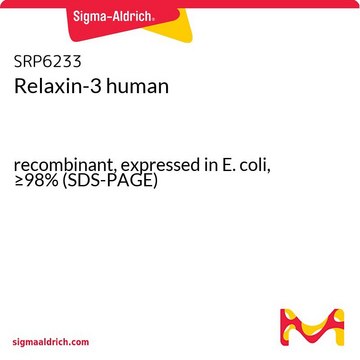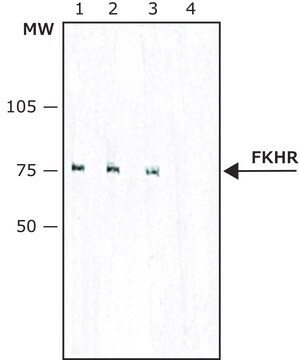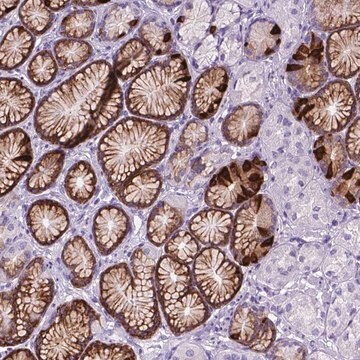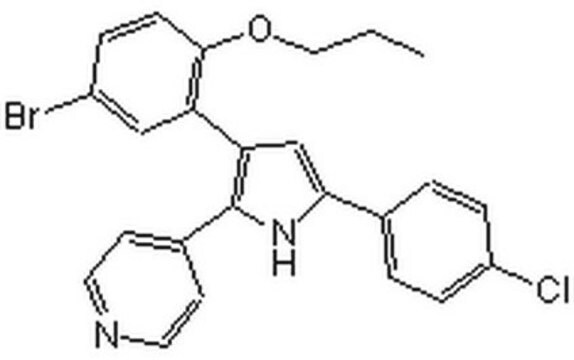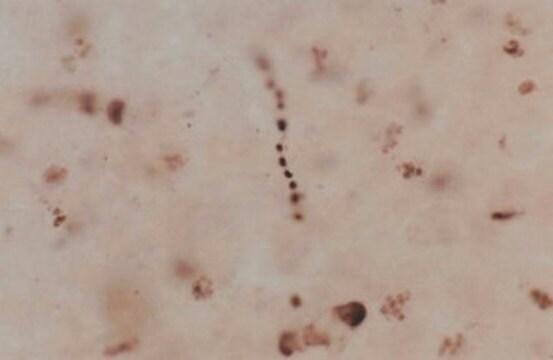SRP3304
INSL5/INSL7 HYBRID human
recombinant, expressed in E. coli, ≥98% (SDS-PAGE), ≥98% (HPLC)
Synonym(s):
none
Sign Into View Organizational & Contract Pricing
All Photos(1)
About This Item
UNSPSC Code:
12352200
NACRES:
NA.32
Recommended Products
biological source
human
recombinant
expressed in E. coli
Assay
≥98% (HPLC)
≥98% (SDS-PAGE)
form
lyophilized
mol wt
5.7 kDa
packaging
pkg of 25 μg
impurities
<0.1 EU/μg endotoxin, tested
color
white to off-white
UniProt accession no.
shipped in
wet ice
storage temp.
−20°C
Gene Information
human ... INSL5(10022) , RLN3(117579)
Biochem/physiol Actions
The Insulin/Relaxin structural family of proteins consists of at least seven members, each containing an Insulin-like hetero-dimeric structure consisting of two polypeptide chains held together by two inter-chain disulfide bonds. INSL7-INSL5 hybrid contains the B-chain of INSL7 (Relaxin-3), linked to the A-chain of INSL5. The INSL7-INSL5 hybrid protein can specifically activate the G protein coupled receptors, GPCR135 and GPCR142, but unlike Relaxin-3, does not induce significant activation of the LGR7 receptor. Recombinant INSL7-INSL5 hybrid is a hetero-dimeric 5.7 kDa protein consisting of a 27 amino acid B-chain disulfide linked to a 21 amino acid A-chain.
Physical form
Lyophilized with no additives.
Reconstitution
Centrifuge the vial prior to opening. Reconstitute in water to a concentration of 0.1-1.0 mg/mL. Do not vortex. This solution can be stored at 2-8°C for up to 1 week. For extended storage, it is recommended to further dilute in a buffer containing a carrier protein (example 0.1% BSA) and store in working aliquots at -20°C to -80°C.
Storage Class Code
10 - Combustible liquids
WGK
WGK 3
Flash Point(F)
Not applicable
Flash Point(C)
Not applicable
Choose from one of the most recent versions:
Certificates of Analysis (COA)
Lot/Batch Number
Don't see the Right Version?
If you require a particular version, you can look up a specific certificate by the Lot or Batch number.
Already Own This Product?
Find documentation for the products that you have recently purchased in the Document Library.
Sheau Yu Teddy Hsu et al.
Annals of the New York Academy of Sciences, 1041, 520-529 (2005-06-16)
Recent studies have characterized two G-protein-coupled receptors (GPCRs), LGR7 and LGR8, as relaxin receptors. Later studies have shown that LGR7 and LGR8 also are cognate receptors for the relaxin-family peptides, INSL7/relaxin3 and INSL3, respectively. In addition, INSL7/relaxin3 signals through two
Our team of scientists has experience in all areas of research including Life Science, Material Science, Chemical Synthesis, Chromatography, Analytical and many others.
Contact Technical Service
